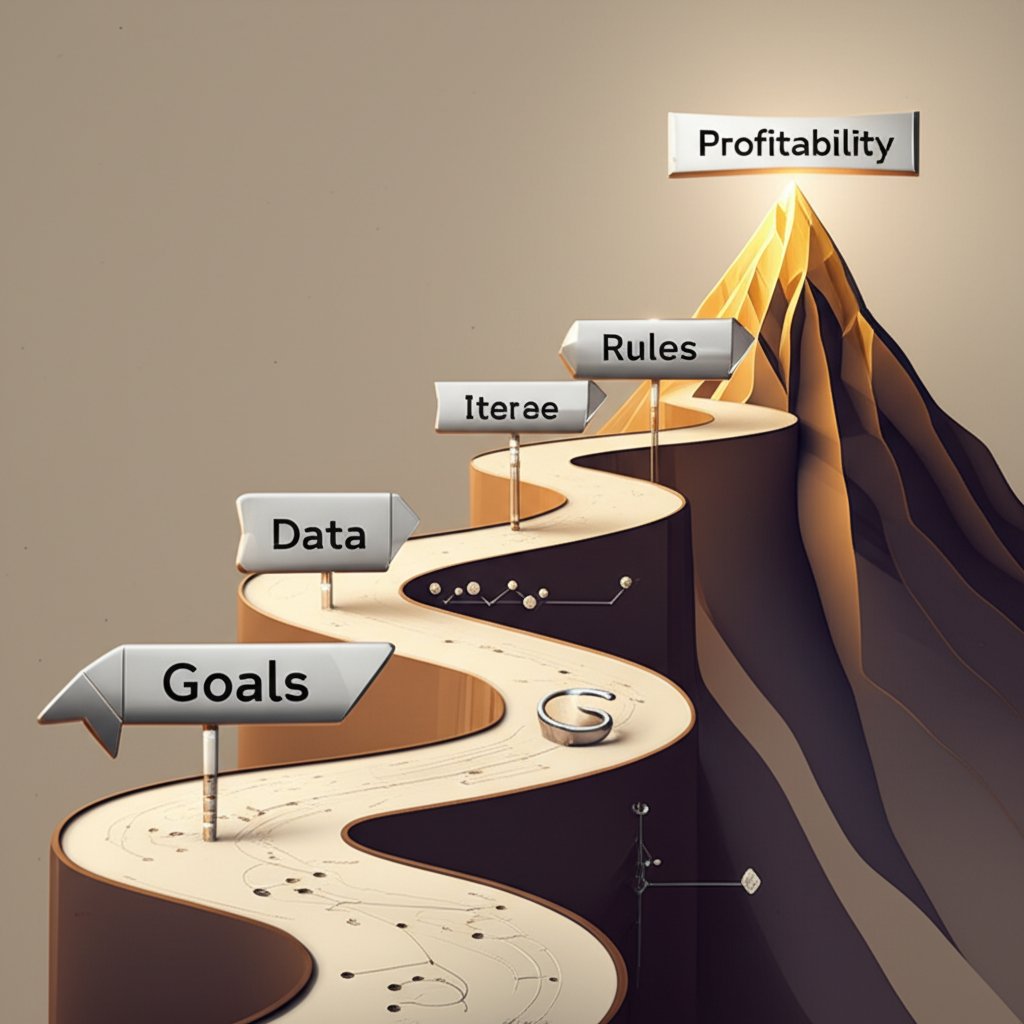TL;DR
Retail price optimization software uses artificial intelligence and data analytics to help businesses set the most effective product prices. By analyzing market trends, competitor pricing, and customer behavior, these tools automatically recommend adjustments to maximize profitability, boost sales, and adapt quickly to changing market conditions. Embracing this technology is key to maintaining a competitive edge in a dynamic market.
What Is Retail Price Optimization Software and Why Is It Crucial?
Retail price optimization software is a sophisticated tool designed to help businesses define, manage, and analyze pricing strategies to achieve the best possible outcomes. At its core, this software leverages AI and predictive analytics to sift through vast datasets, including historical sales figures, competitor pricing, inventory levels, and even external factors like seasonal demand and market trends. According to G2, its primary function is to improve profitability, sales, and customer retention by suggesting optimal prices for each product, often tailored by location or season. This moves pricing from a reactive, gut-feel process to a proactive, data-driven strategy.
The technology behind these platforms is what makes them so powerful. Vendors like Revionics emphasize their AI-driven models, which are built specifically for the complexities of retail. These systems don't just look at a single variable; they analyze the interplay between thousands of factors to find the pricing 'sweet spot' that balances profit margins with customer willingness to pay. This prevents common retail pitfalls, such as undercharging and leaving money on the table, or overcharging and alienating potential buyers. By automating this complex analysis, businesses can respond to market shifts with a speed and accuracy that is impossible to achieve manually.
The application of this software spans numerous retail sectors, demonstrating its versatility. For example, big-box retailers like Walmart use it to monitor competitors and adjust prices to stay competitive. Grocery stores leverage it to manage perishable goods, dynamically pricing items to reduce spoilage and maximize sales. Similarly, fashion retailers such as H&M use pricing software to account for fast-moving trends. The impact is significant; PROS, a leading provider, reports that its clients see up to a 5% margin improvement and a 20% revenue uplift by implementing AI-driven pricing. These examples underscore that in today's data-rich environment, strategic pricing is a critical lever for success.
Key Features to Evaluate in Pricing Software
When selecting a retail price optimization solution, it's crucial to look beyond the surface-level promises and evaluate the specific capabilities that will drive results for your business. Not all platforms are created equal, and the right features can mean the difference between a marginal improvement and a transformational impact on your bottom line. A thorough evaluation should be treated as a checklist to ensure the software aligns with your strategic goals, from dynamic adjustments to deep analytical insights.
Based on insights from industry leaders and review platforms like Gartner, here are the essential features to look for:
- AI-Powered Price Optimization: This is the core engine of the software. It should use machine learning to analyze historical data, market trends, and customer behavior to deliver tailored price recommendations. The AI should be transparent enough to help you understand its logic and build confidence in its suggestions.
- Dynamic Pricing Engine: The market doesn't stand still, and neither should your prices. A dynamic engine allows for automated, real-time price adjustments based on pre-defined rules, competitor actions, demand shifts, and inventory levels. This is particularly vital for eCommerce and industries with high price volatility.
- Competitive Intelligence and Monitoring: Your pricing strategy exists within a competitive landscape. The software must be able to accurately track competitor prices across various channels in real-time. Look for features like automated benchmarking and alerts that notify you of significant changes, allowing you to react swiftly.
- Demand Forecasting: An effective platform should predict how price changes will impact sales volume. By analyzing price elasticity, the software helps you understand how sensitive your customers are to price fluctuations, enabling you to set prices that maximize revenue without sacrificing sales.
- Promotional Insights and Optimization: Pricing isn't just about the base price; it's also about promotions, discounts, and markdowns. The software should help you design and analyze the effectiveness of promotional campaigns to ensure a positive return on investment.
- Omnichannel Price Management: Customers interact with your brand across multiple channels—in-store, online, and on mobile apps. The software must ensure price consistency and strategic alignment across all these touchpoints to provide a seamless customer experience.
- Seamless Integration Capabilities: To function effectively, the software must integrate with your existing technology stack, including your ERP, POS, and eCommerce platforms. This ensures a smooth flow of real-time data, which is the lifeblood of any successful pricing strategy.

Top Retail Price Optimization Software: A Comparative Review
Navigating the market for retail price optimization software can be challenging, with various solutions catering to different business sizes and needs. To simplify the process, we've compared some of the top providers mentioned across leading industry review sites. Each solution offers a unique blend of features, making them suitable for specific types of retailers.
| Software | Best For | Key Feature | Target Market |
|---|---|---|---|
| Prisync | Small to Medium eCommerce | Competitor Price Tracking | SMBs |
| DataWeave | Large Enterprises | AI-Powered Competitive Intelligence | Enterprise |
| Intelligence Node | Brick-and-Mortar & Omnichannel | Real-Time Price Monitoring | Enterprise |
| Revionics | Large Retail Chains | Lifecycle Pricing Optimization | Enterprise |
| PROS | B2B and B2C Enterprises | Neural Network-Based AI | Enterprise |
Prisync
Prisync is widely recognized as an excellent solution for small and medium-sized businesses, particularly in the eCommerce space. Its core strength lies in its powerful competitor price tracking and monitoring capabilities. The platform offers affordable, tiered packages that allow smaller businesses to access dynamic pricing suggestions without a massive upfront investment.
- Pros: Automated competitor tracking, easy-to-use interface, affordable entry-level plans.
- Cons: May lack some of the advanced AI and industry-specific features needed by larger enterprises.
DataWeave
DataWeave is tailored for enterprise-level retailers that require deep, actionable insights from vast amounts of online data. Its AI-powered platform excels at providing competitive intelligence on pricing, promotions, and product assortments. DataWeave's ability to deliver customized data solutions makes it a flexible choice for large organizations with complex needs.
- Pros: Highly flexible and customizable, strong AI-powered product matching, excellent customer support.
- Cons: The complexity and cost can be prohibitive for smaller businesses.
Intelligence Node
Intelligence Node is a strong contender for brick-and-mortar and omnichannel retailers that need to stay competitive with online giants. The platform provides real-time analytics on competitor pricing and product trends, allowing physical stores to optimize their in-store strategies. Its focus on high-accuracy data collection makes it a reliable choice for businesses where precise information is critical.
- Pros: High data accuracy, vertical-specific intelligence, real-time monitoring and alerts.
- Cons: High starting price point (reported to be around $5,000/month), which makes it unsuitable for most SMBs.
Revionics
Revionics positions itself as a leader for large retailers needing a comprehensive lifecycle pricing solution. Their platform covers everything from initial base pricing to promotions and markdowns. With a strong focus on advanced AI built by retail experts, Revionics helps major global brands understand shopper behavior and optimize prices at a localized level.
- Pros: End-to-end pricing lifecycle management, sophisticated and proven AI models, extensive experience in the retail sector.
- Cons: Primarily designed for large-scale retail operations, likely making it too complex and expensive for smaller players.

How to Implement a Pricing Optimization Strategy
Acquiring powerful software is only the first step; deriving value from it requires a well-defined implementation strategy. A successful rollout goes beyond technical setup and involves aligning the tool with clear business objectives and integrating it into your daily operations. This structured approach ensures that the technology serves your strategy, not the other way around, turning data-driven insights into tangible profit.
Before diving in, it's helpful to understand the foundational pricing models that software can automate and enhance. The four primary strategies are value-based (pricing based on perceived customer value), competition-based (pricing relative to competitors), cost-plus (adding a markup to costs), and dynamic pricing (adjusting prices in real-time). Modern software excels at blending these models to fit specific scenarios.
Follow these steps to effectively implement your pricing optimization strategy:
- Define Clear Business Goals: What do you want to achieve? Your objective could be to increase profit margins, grow market share, liquidate aging inventory, or improve your competitive positioning. Your goals will determine how you configure the software's rules and algorithms. For example, a goal of market share growth might lead to more aggressive, competition-based pricing rules.
- Ensure Comprehensive Data Integration: Accurate pricing decisions depend on high-quality data. It is crucial to integrate the software with all relevant systems, including your Point of Sale (POS), ERP, inventory management, and eCommerce platforms. This creates a single source of truth and allows the AI engine to analyze a complete picture of your business.
- Configure Pricing Rules and Models: This is where you translate your strategy into action within the software. Set up rules based on the features discussed earlier, such as competitor price matching, desired margin levels, and inventory thresholds. Work with your software provider to calibrate the AI models to reflect your unique market position and business constraints.
- Test, Monitor, and Iterate: Pricing is not a 'set it and forget it' activity. Launch your new pricing strategy in a controlled manner, perhaps by testing it on a specific product category or region first. Use the software's analytics and dashboards to continuously monitor performance against your goals. Be prepared to refine your rules and iterate on your strategy as you gather more data and the market evolves.
Frequently Asked Questions
1. What is pricing optimization software?
Pricing optimization software is a tool that uses data analytics and AI to help businesses determine the most effective prices for their products or services. It analyzes factors like customer demand, competitor prices, and operating costs to recommend prices that maximize objectives such as revenue, profit margins, or market share.
2. What is retail pricing optimization?
Retail pricing optimization is the specific application of these tools and strategies within the retail industry. It focuses on setting optimal prices for every product across different channels and locations to meet business goals. It often involves managing complex scenarios like promotions, markdowns for perishable goods, and maintaining price consistency between online and physical stores.
3. What are the 4 main pricing strategies?
The four main pricing strategies are: 1) Value-based pricing, which sets prices based on the customer's perceived value of the product. 2) Competition-based pricing, which uses competitors' prices as a benchmark. 3) Cost-plus pricing, which involves adding a standard markup to the cost of the product. 4) Dynamic pricing, where prices are adjusted in real-time based on demand and supply.




